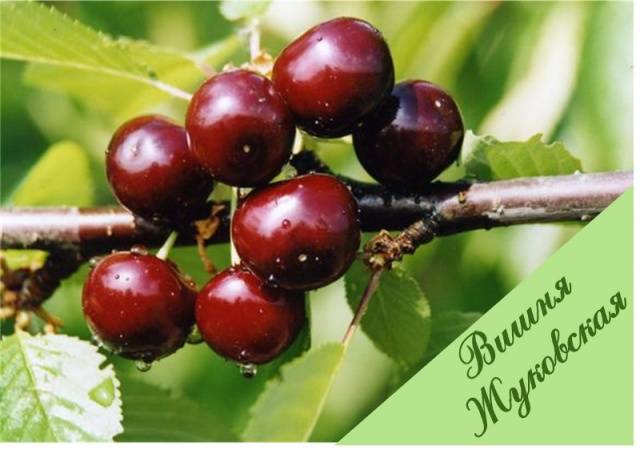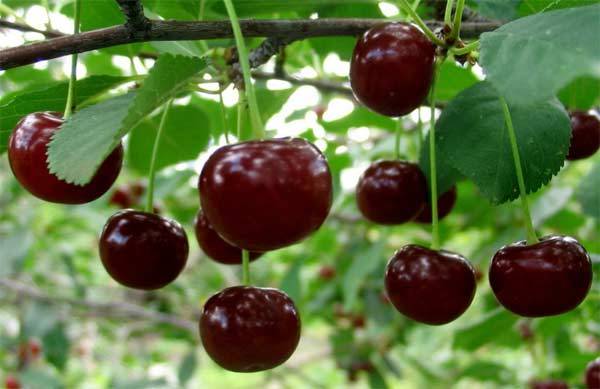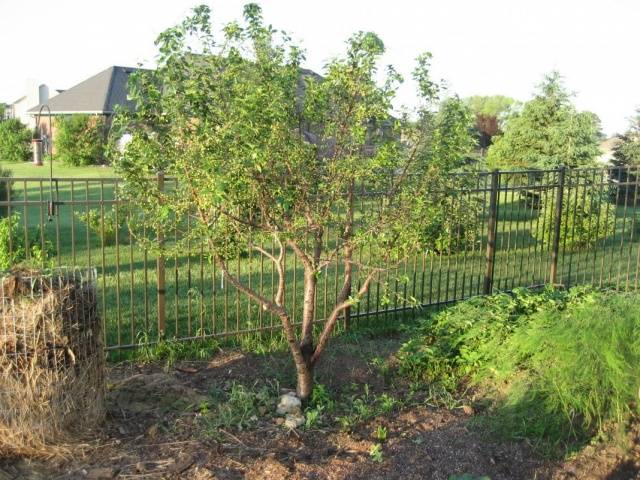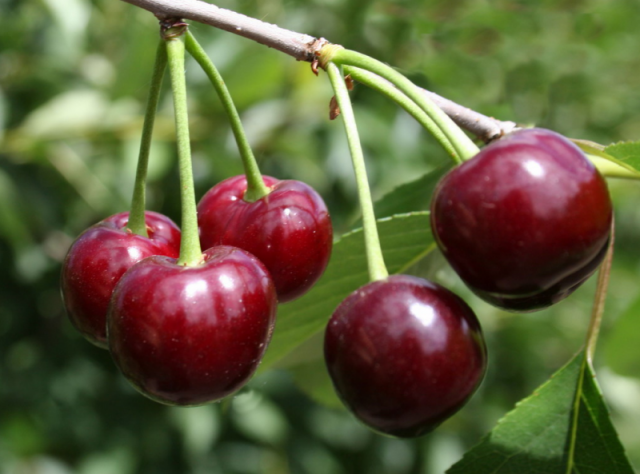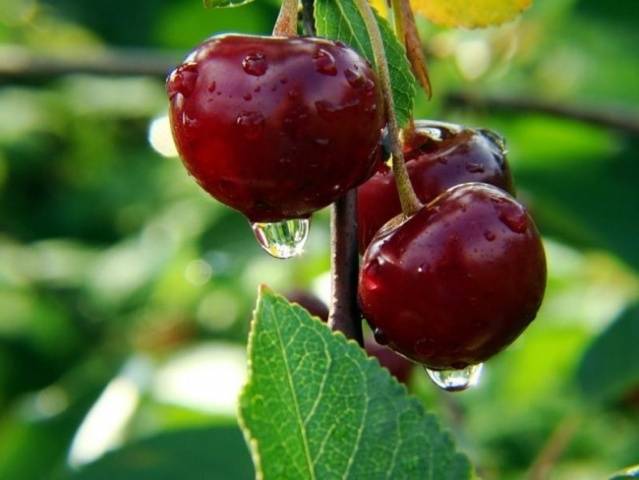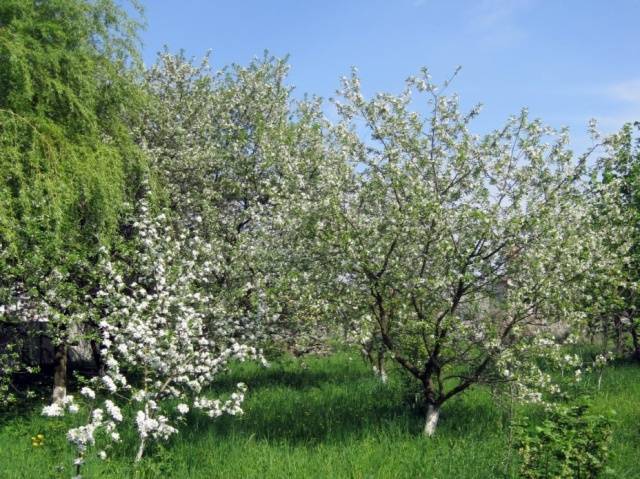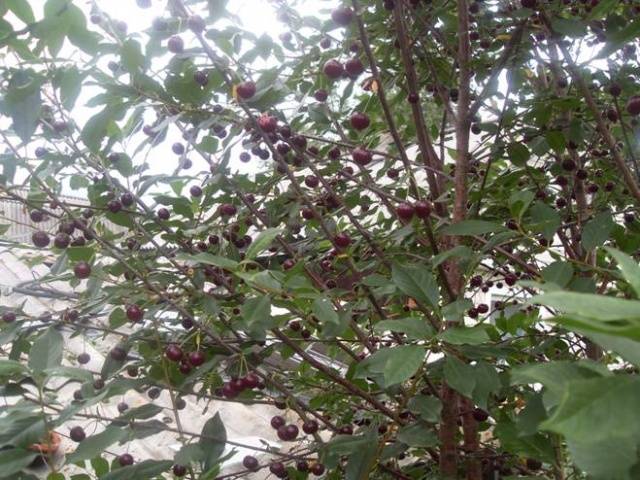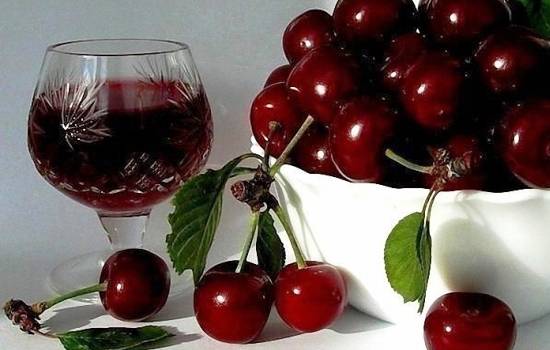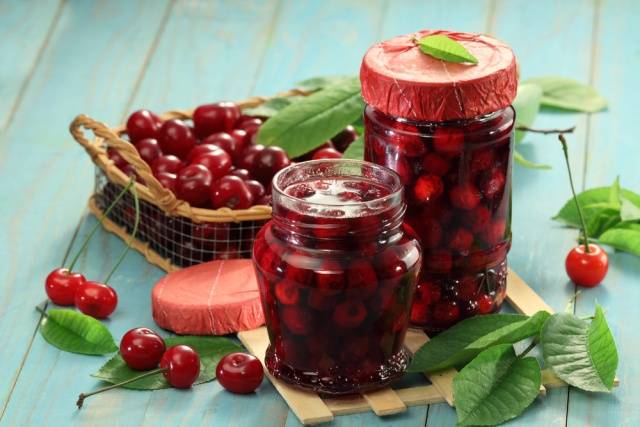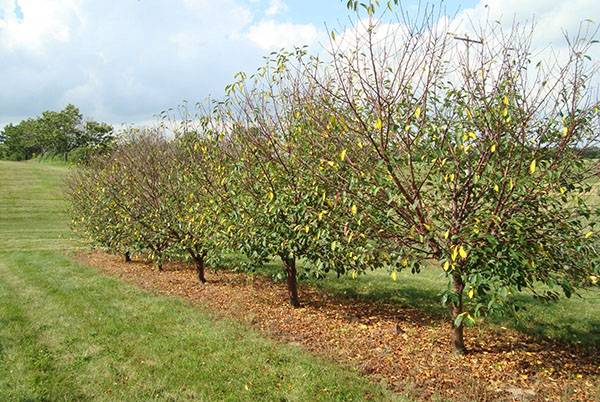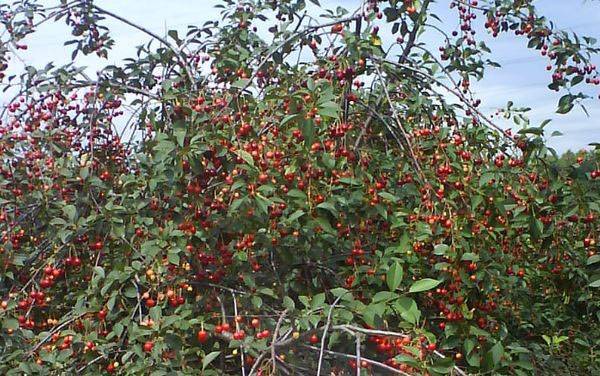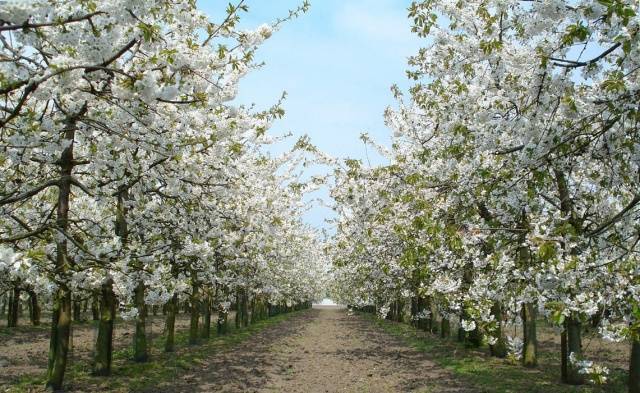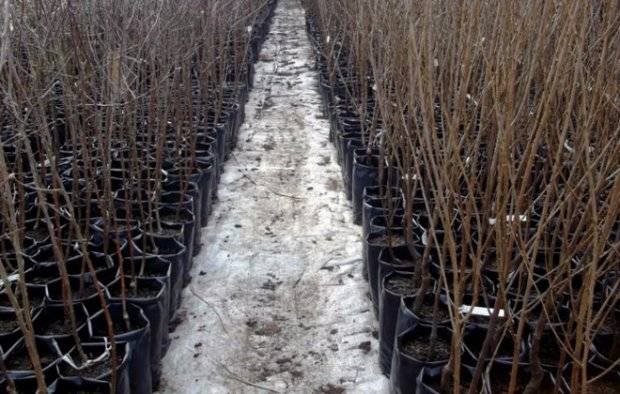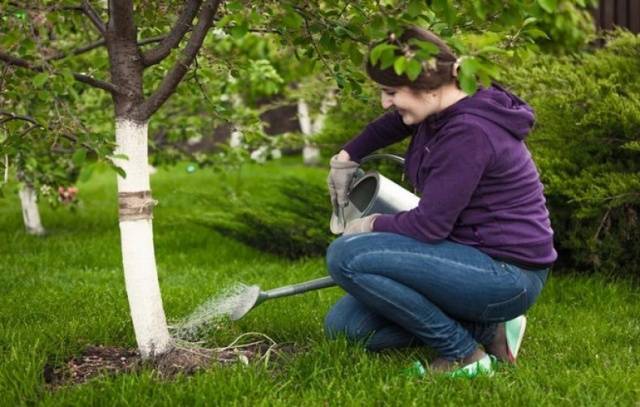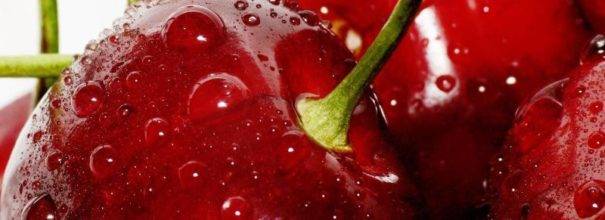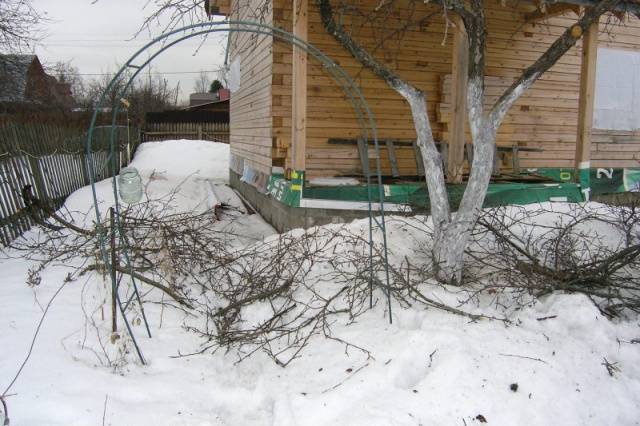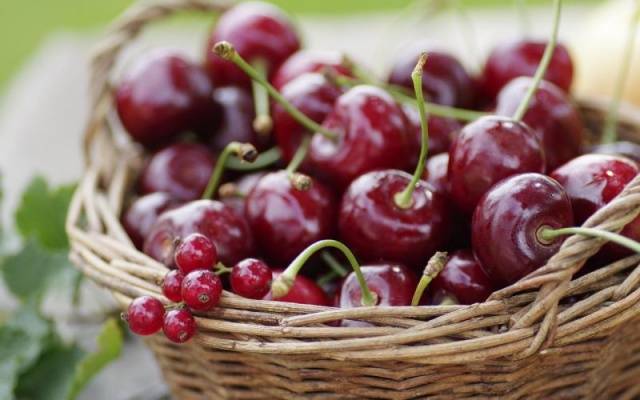Content
All cultivated varieties of cherry came from five wild species - steppe, felt, Magaleb, ordinary and sweet cherry. Dukes occupy a special place in this row. They were created by crossing cherries with cherries, and they took the best from each culture. Large sweet berries grow on a tree that can withstand severe frosts. One of the most winter-hardy varieties is Zhukovskaya. In terms of their properties, dukes are closer to cherry than to sweet cherry.
Breeding history
Dukes owe their name to the English variety May Duk, which appeared in the 17th century from the accidental crossing of cherry with sweet cherry. It can still be found in gardens in the south of Russia. The first Russian duke was obtained in 1888 by Ivan Michurin by crossing the Winkler Belaya cherry and Belaya cherry varieties. It is named Krasa Severa and is still one of the most frost-resistant. Due to its low transportability and mediocre taste, it has not received much distribution.
Cherries and sweet cherries interbreed easily, but new varieties of dukes rarely appear. This is due to the fact that most hybrids produce extremely low yields. The Zhukovskaya variety was created in 1947 and today remains one of the best for cold regions. Its authors are S.V. Zhukov and E.N. Michurin.
Description of culture
In taste, appearance, cultivation characteristics, Zhukovskaya is more like a cherry than a sweet cherry. It forms a tree of medium height, usually about 2.5 m in height, but can grow up to 3.5 m. The crown of Zhukovskaya cherry is rounded, slightly spreading.
Curved branches of medium leafiness and thickness, the bark is reddish-brown, covered with yellowish-silvery growths resembling lentils. Oval dark green leaves with a sharp tip that are larger than those of regular cherries. They are attached to the branches on a long petiole at an acute angle and bend downward.
Most of the large white flowers appear on bouquet branches, only a few are attached to annual shoots. Berries of the Zhukovskaya variety are rounded at the base, with a somewhat elongated top, which is why their shape resembles a heart. The size of dark red fruits is uneven, on average - 4 g, individual cherries can reach 7 g. The berries are very tasty (tasters' rating - 5 points), sweet and sour, with a dense, but tender pulp. Cherry pits Zhukovskaya are large. Fruits firmly adhere to the stalks, do not crumble after ripening.
Characteristics
In garden centers and nurseries, the Zhukovskaya variety is sold as a cherry, since in all respects it is much closer to this culture than to a sweet cherry.
Drought resistance, winter hardiness
Cherry Zhukovskaya tolerates drought well. Lack of water does not harm the mature tree, but affects the quality and quantity of berries. With sufficient moisture, the cherries will be larger and more juicy. This does not mean that Zhukovskaya needs to be watered every day - this is how the fruits will crack, will be tasteless, watery. In the absence of rain for a long time, moisture charging is carried out twice a month.
In the Central Chernozem region, Zhukovskaya cherry winters without any problems. To the north, flower buds often freeze slightly - the winter hardiness of the variety is average.In order to grow Zhukovskaya in cold regions, in the fall, the trunk circle is mulched with a thick layer of humus, and the stem is wrapped in burlap or other covering material.
It is impossible to name the exact time when it is necessary to build a shelter - it depends on the weather. If possible, wait for the first frost.
The best cherry varieties Zhukovskaya grows in the Central, Central Black Earth, Srednevolzhsky regions.
Pollination and ripening period
Cherry Zhukovskaya is self-fertile, average forty ripening. When the dykes are pollinated, a close planting of any variety is not always successful. It is better to use cherry rather than cherry trees... For Zhukovskaya, Lyubskaya, Apukhinskaya, Vladimirskaya, Molodezhnaya, Griot Ostgeimsky or Consumer goods Black can be planted as pollinators.
The ripening period of Zhukovskaya for the central regions is mid-July, in more northern regions the berries are poured later.
Productivity, fruiting
Cherry Zhukovskaya begins to bear fruit in the fourth year of life. The tree reaches a marketable yield by the age of 10 and increases productivity up to at least 16 years of age. Then the berries become smaller. Cherries have a lifespan of about 20 years.
Zhukovskaya's yield is unstable. In a bad year, even an adult, well-pollinated tree can produce only 3-4 kg of berries. Under favorable conditions, the yield of the same tree is 4 times higher. At the peak of fruiting, even 30 kg of cherries can be harvested from 16-year-old Zhukovskaya.
The positive features of the variety include a friendly return of the harvest. This allows for mechanized harvesting of berries once a season.
Scope of berries
Berries of Zhukovskaya cherries are very tasty, sweet and sour, with a dense but tender pulp. They have a universal purpose - they are suitable for fresh consumption, for making sweet desserts, preserves, compotes. It is Zhukovskaya that is good to grow as an industrial variety in large gardens - the berries are removed from it with a dry separation, they are well transported.
Disease and pest resistance
Although the variety is usually called cherry, some of the genes belong to the cherry. Due to this, Zhukovskaya has satisfactory resistance to coccomycosis and increased resistance to annular spotting. Pests also infrequently affect the variety. This does not mean that Zhukovskaya is completely immune to disease. Preventive treatments must be carried out.
Advantages and disadvantages
Griot Zhukovskaya, of course, is not perfect. But its advantages clearly outweigh the disadvantages:
- Excellent taste - tasting score 5 points.
- The visual appeal of berries and wood.
- High productivity.
- Simultaneous ripening of berries, which allows for mechanized harvesting.
- Increased, in comparison with other cherries, resistance to coccomycosis, ring spot.
- Berries do not fall off after ripening.
- High transportability of fruits.
- Zhukovskaya cherries have a universal purpose.
The negative qualities of the variety include:
- Average frost resistance. Without shelter, Zhukovskaya winters in the Volga, Central and Central Chernozem districts.
- In cold winters, flower buds freeze.
- Self-infertility - the variety needs pollinators.
- Quite a large bone.
- The instability of fruiting - the Zhukovskaya variety has fruitful years and those in which the tree produces very few berries.
Landing features
Cherry Zhukovskaya grows well in the central regions of Russia. In the north, it requires the construction of a shelter for the winter, which is problematic for a 2-3-meter tree.In the southern regions and in Ukraine, Zhukovskaya cherry feels great.
Dates and place of landing
The best time to plant dukes in central Russia is early spring, before bud break. In the north, this period is the only possible one. A tree planted at the end of the growing season will not have time to take root and will most likely die in winter.
Dukes do not like the close standing of groundwater even more than ordinary cherries. It is better if their level is located not less than 1.5 m from the soil surface. Choose a sunny place for landing, on a gentle hill (slope no more than 15%). For planting cherries, western, southwestern or northwestern slopes are ideal.
The soil should be loose, with a neutral reaction. Acidic soil will have to be improved with lime, excessively clayey - with sand. In any case, humus, potash and phosphorus fertilizers are added to the planting pit.
Selection and preparation of planting material
To purchase high-quality planting material, seedlings need to be bought in garden centers or directly from nurseries. The Zhukovskaya variety has an average frost resistance. You can be sure that the seedling will winter well on your site if the nursery in which it is grown is located to the north.
Annual trees up to 80 cm high or two-year-olds no more than 110 cm have the best survival rate. That is why we recommend not buying cut seedlings. You can remove the top yourself, but sellers should not believe how high the cherry was.
The root system must be well developed.
Landing algorithm
Although Zhukovskaya is a medium-sized cherry, it needs enough space for the sun to illuminate the crown from all sides, even when the tree grows. Private gardens are best laid out in a pattern of 2.5-3 m between trees, rows - at a distance of 4 m from each other.
Before planting a cherry, its root is soaked for at least 3 hours. Further procedure:
- Dig a landing hole 60 cm deep and 80 cm in diameter.
- A fertile mixture is prepared from the topsoil, a bucket of humus, potash and phosphorus fertilizers (50 g each).
- A little to the side of the center of the pit, a peg is driven in for a sapling garter.
- Cherries are placed in the middle and covered with a fertile mixture, tamping it down as it fills. The root collar should rise by 5-7 cm.
- An earthen roller is poured around the planting pit to retain moisture.
- The seedling is watered using 2-3 buckets of water.
- The trunk circle is mulched with a thick layer of humus.
Follow-up care of the culture
After planting, especially if the summer is hot, dry, the seedling needs to be watered regularly. The soil should not dry out, but there is no need to drown the tree in water. For each cherry, 2 buckets are consumed, and when the top layer of soil dries up a little, it is loosened.
When the seedling takes root, watering is needed only if it is hot, dry weather for a long time. Then the soil is moistened 1-2 times a month, but abundantly.
In dry autumn, moisture charging is required, otherwise the cherry may not overwinter even in warm regions. Before harvesting, watering is stopped (about 2 weeks).
Cherry responds well to the introduction of nitrogen and potash fertilizers; it is best to apply 1-2 buckets of humus and a liter can of ash under each root in the fall. The plant also needs phosphorus, but in much smaller quantities. Those doses that are contained in ash and humus are enough for cherries.
Cherry Zhukovskaya grows as a tree, it will not be possible to insulate it for the winter, like a steppe one - flower buds will freeze in a harsh winter anyway. To protect against hares and other rodents, the stem is wrapped in burlap or other covering material.
Cherry pruning is carried out in the spring as early as possible in order to finish it before budding.
Diseases and pests
Cherry Zhukovskaya is resistant to coccomycosis and other fungi. But this does not mean that the disease does not affect the variety at all. Preventive treatments need to be carried out, you can just choose a gentle drug.
When pests appear, the cherries are sprayed twice with an insecticide. The interval between treatments should be 10-14 days.
Conclusion
Duke Zhukovskaya is one of the best hybrids of cherry and sweet cherry, although it was created back in 1947. Attractive appearance, tasty large berries, increased resistance to fungal diseases, the possibility of mechanized harvesting make the variety desirable on personal plots and in industrial gardens.
Testimonials
